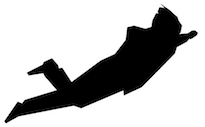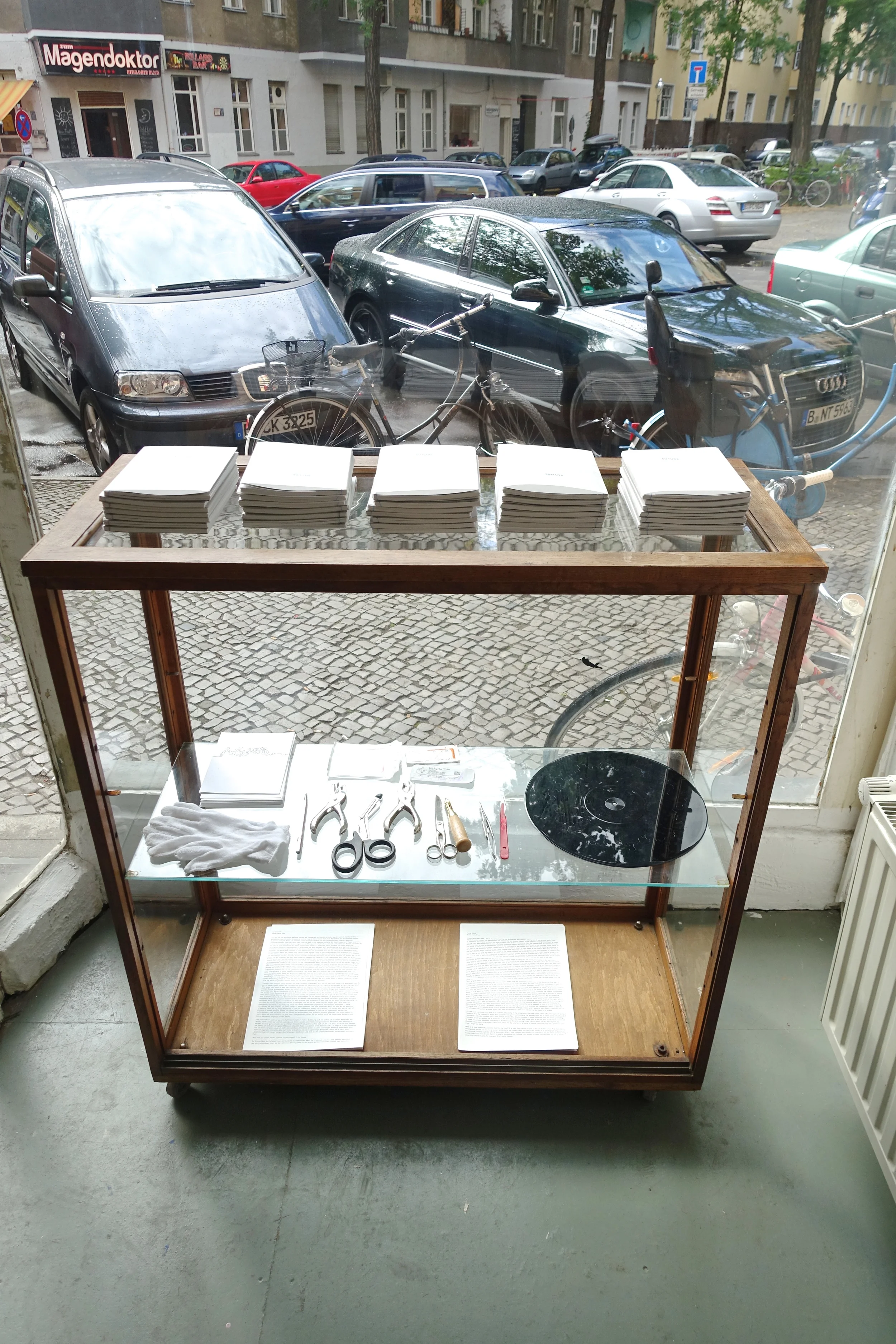Suture
Morten Søndergaard with Åse Eg
Exhibition and Book Launch
18/6 2015 - 2/7 2015
48 Pages
20 Euro
Hand-bound with a medical thread and needle
Edition: 300
ISBN 978-3-943196-42-9
'The possibilities or necessities without which there would be no language, are themselves not only human. And what I am proposing here should allow us to take into account scientific knowledge about the complexity of 'animal languages', genetic coding, all forms of marking within which so-called human language, as original as it might be, does not allow us to 'cut' once and for all where we would in general like to cut.' (Derrida, 'Eating well')
How can we rethink a dissonance between language and materiality that is as old as Western civilization itself? Are there ways of articulation and inscription that follow different rules than the symbolic sign-structures of human language? What would such strange alphabets look like?
As part of our ongoing investigation into the parapoetic, Broken Dimanche Press is proud to present Danish poet and artist Morten Søndergaard's project Suture, an inquiry into the possibilities of detecting and documenting a different kind of language, a semantic trace deeply engraved in the physical existence of our bodies. The project is an archeological investigation into the etymology of the word ’suture’, exploring the horizon of meanings that inhabit this word.
A suture is the curve that binds the various parts of the skull together. It also refers to the medical stitches that hold together a wound. In geology, a suture represents a collision between two tectonic plates. The suture encompasses intersection and conjunction, healing and fracture. The word suture is linked to the sphere of the body, and to the field of medicine, but it also confers with the domain of signs. The seam-like structure of a suture, and the act of stitching something together reaches into the world of language via the etymological connection between the words 'textile', 'texture' and the word 'text'.
The suture is a trace in the Derridean sense: a fundamentally semiotic, but not entirely human marking of difference in the material world. The suture can be seen as an engraving in a strange language, the graph-like seam resembling a heart rate from an alien frequency. Rainer Maria Rilke was fascinated by the suture of the skull, comparing it to the groove of a record, and he fantasized about playing this suture, thinking that it would reveal a 'primal-sound’ of the body.
The suture of the skull is – like a fingerprint – unique to every human. Deep within our bodies we carry our own secret signatures, a para-linguistic testament of some sort that testifies to our existence in this world a long time after the body has decomposed into inorganic, mineral matter. Or put differently: the suture reminds us that our bodies do not belong to us in an entirely unproblematic manner – that its being, constitution and history exceeds the singular human subject who, for a short period of time, inhabits it. If the suture can be said to outline a strange narrative of some sort told by the body itself, it is a testament that 'we' – understood as human consciousness – have no part in its writing.
For Suture, Søndergaard has ventured into the catacombs of Paris to photograph, and later transcribed one hundred different sutures, collecting them all in one, single line. These 'readymades' form an enigmatic and collective story of and by bodies that for a long time haven’t met the standards for such categories as 'life' or 'identity'. Suture, thus, discloses an arcane underground archive of (non-)human inscriptions, another – and quite literal – kind of subconscious. The scriptures are retrieved from the skull, the very container of human thought, and as such they come to symbolize a 'mattering', a semiotic force deep within the most intimate spaces of being that cannot be reduced to the articulations of a finite, human subject.
The work calls to reflect upon the interconnectedness between 'texture' and 'text', between the non-human fabric of the world, and the various articulations imprinted on this. This 'super-suture' is depicted on the gallery wall, and printed in the artist book Suture which has been created in collaboration with artist Åse Eg. The publication will be exhibited, and can be obtained at the exhibition. It will be bound on the spot with a medical thread, tentatively suturing any fractures between language and world.
With the kind support from the Danish Arts Foundation and Grosserer L. F. Foghts Fond
Morten Søndergaard b. 1964 is one of the foremost of the generation of Danish poets to emerge onto the scene in the early Nineties. Søndergaard’s first collection of poetry, Sahara i mine hænder (Sahara In My Hands) was published in 1992. This debut collection has been followed by a succession of works which have won him both critical acclaim and a number of literary awards. Language is Morten Søndergaard’s medium and his métier, one which he practises not only as a poet, but also as a translator, sound artist and literary editor. And while his craft is solidly rooted in the classic poetic tradition he is constantly intent on exploring the possibilities of language and new ways in which these can be presented. Over the years, alongside his written publications, this has resulted in musical and dramatic works and in recordings, exhibitions and installations centring on language, materiality and sound. Morten Søndergaard has been translated into a large number of languages, and his work 'Wordpharmacy' (Broken Dimanche Press, 2012) has been exhibited all over Europe.
Åse Eg b. 1958 Danish artist and graphic designer based in Copenhagen. For 30 years co-editor of Pist Protta (Danish art-periodical). Practice spans all kinds of printed matter, very fond of paper, colours and books. Most recent artwork: Kompendium 18 (Blad 1 / Leaf 1) and Kompendium 19 (Blad 2 / Leaf 2) collections of leaves from my garden reproduced as photographs (Kompendium 18) and drawings (Kompendium 19) with short texts on the metaphors of leafs connected to books. Graduated from the Danish Design School in 1989. Owner of Åse Eg Aps








